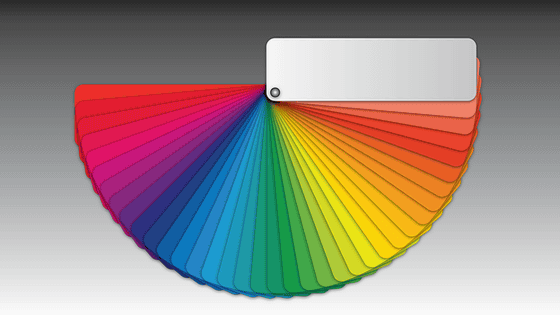Successfully creates a new color, 'olo,' by stimulating the optic nerve

Human eyes contain light-sensitive cells called photoreceptors, which are divided into two types:
Novel color via stimulation of individual photoreceptors at population scale | Science Advances
https://www.science.org/doi/10.1126/sciadv.adu1052
Scientists hijacked the human eye to get it to see a brand-new color. It's called 'olo.' | Live Science
https://www.livescience.com/health/neuroscience/scientists-hijacked-the-human-eye-to-get-it-to-see-a-brand-new-color-its-called-olo

James Fong, a computer science doctoral student at the University of California, Berkeley, and his colleagues have announced a technology they call 'Oz,' which directly controls the activity of the photoreceptors in the human eye by delivering light to each cone cell. The name Oz comes from the Wizard of Oz, a character in which the viewer wears green glasses to prevent the glow of the city from blinding them.
Cone cells are classified into three types: S cones, which have a peak sensitivity at short wavelengths, M cones, which have a peak sensitivity at medium wavelengths, and L cones, which have a peak sensitivity at long wavelengths. Below is an image showing the type of cone that is activated by each wavelength and the color that wavelength indicates. For example, M cones are most sensitive to green, but strictly speaking, the wavelengths to which L cones and S cones respond overlap and are not independent, so there is no 'color that activates only M cones' in the natural environment.

Oz classifies the types of cone cells, tracks them on a cellular scale, and stimulates each one with a wavelength laser 10,000 times per second. This allows it to activate only the M cones, but not the L and S cones, sending color signals to the brain that would never be generated by natural vision.
Indeed, studies have confirmed that Oz can successfully display a range of hues, from orange to yellow, green, and blue-green. Furthermore, attempts to stimulate only the M cones have shown that new colors appear outside the natural human gamut. Subjects have reported seeing a more saturated blue-green than they've ever seen before.
The researchers call this color 'olo' and define the ideal version of olo as 'pure M-cone activation,' a name derived from the 3D color coordinates of '0,1,0,' indicating that only M-cones are activated.
'Our ultimate goal is to have programmable control over every photoreceptor in the retina,' said Fong. 'We're not there yet, but the techniques we've presented in this study show that many of the key principles are actually possible. By using this system to introduce new visual data and patterns of retinal stimulation to the brain, it may be possible for people with color blindness to see new dimensions of color.'
Fong acknowledges that Oz's setup does have some limitations. For one, researchers have mapped only a small portion of the retina, which contains thousands of cone cells, so the user must fixate their gaze on a single spot in order for Oz to shine light on the targeted cones. Making Oz work while tracking a freely moving eye poses significant technical challenges, Fong says.
Fong and his team continue to use Oz to study and treat color blindness, as well as model various eye diseases. In addition, the team is looking into ways to use Oz to provide an experience that allows a small percentage of people to acquire a fourth cone cell, a condition known as tetrachromacy , which is a condition where people have a higher sensitivity to color.
Related Posts:
in Science, Posted by log1e_dh







